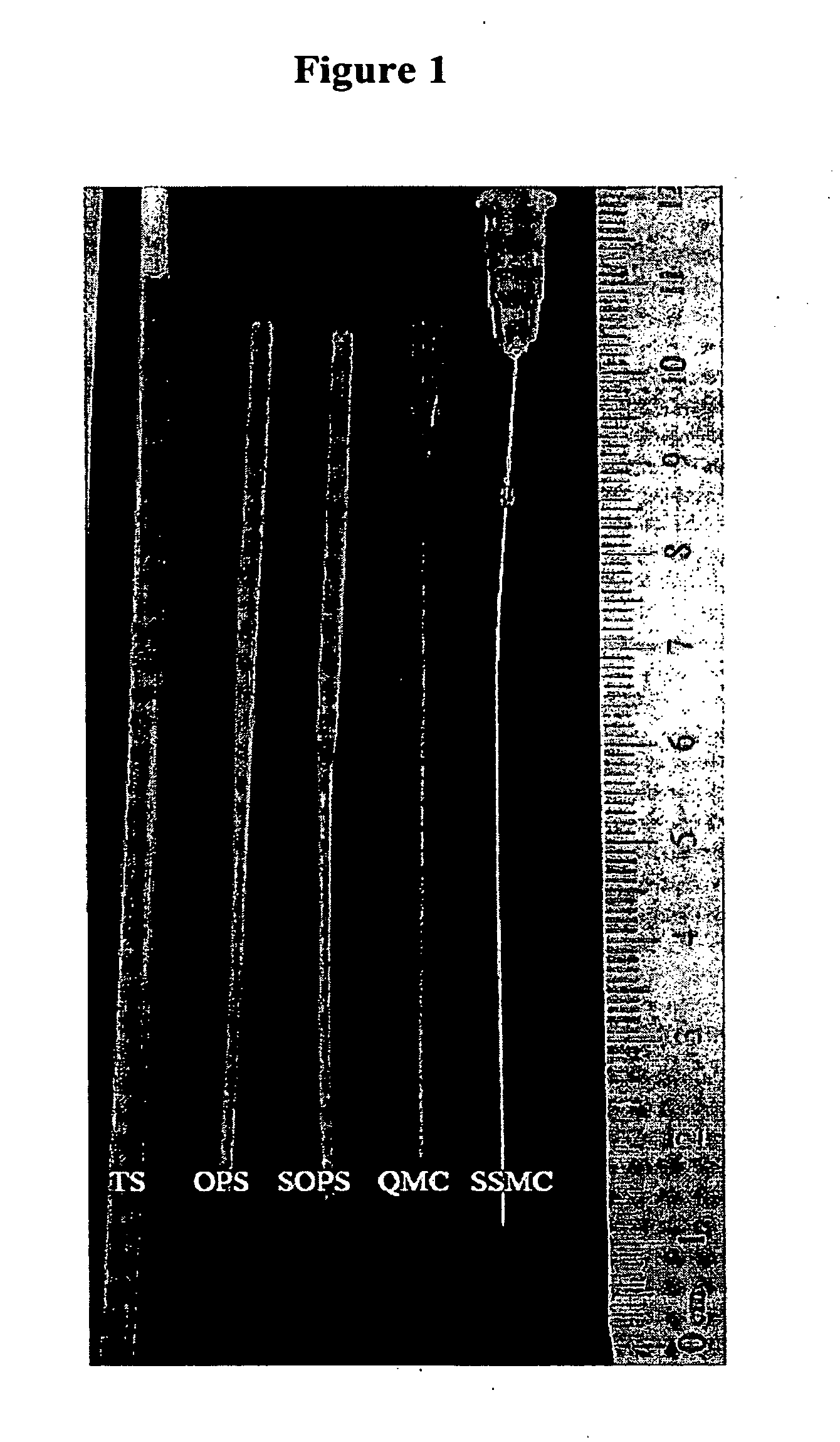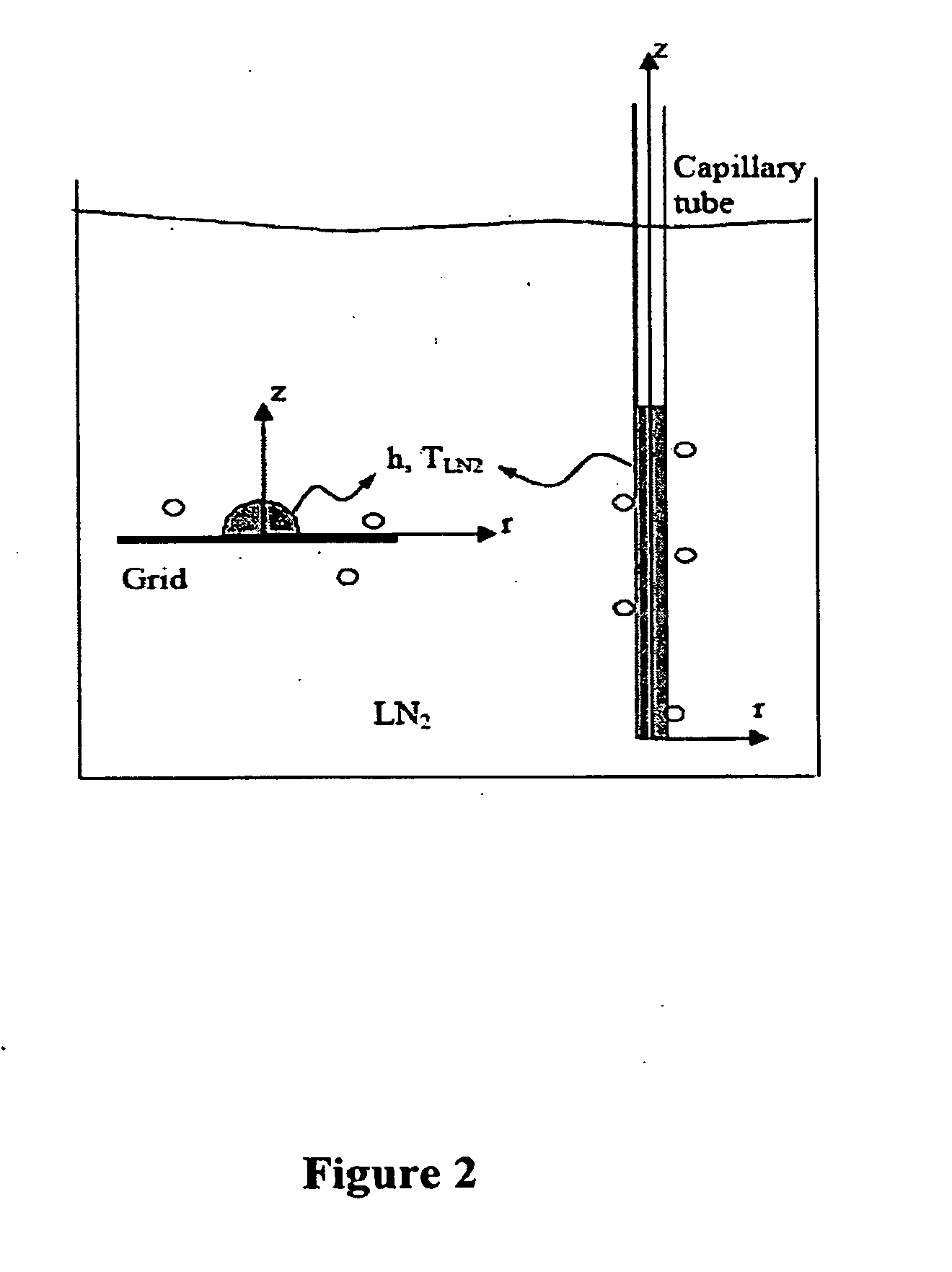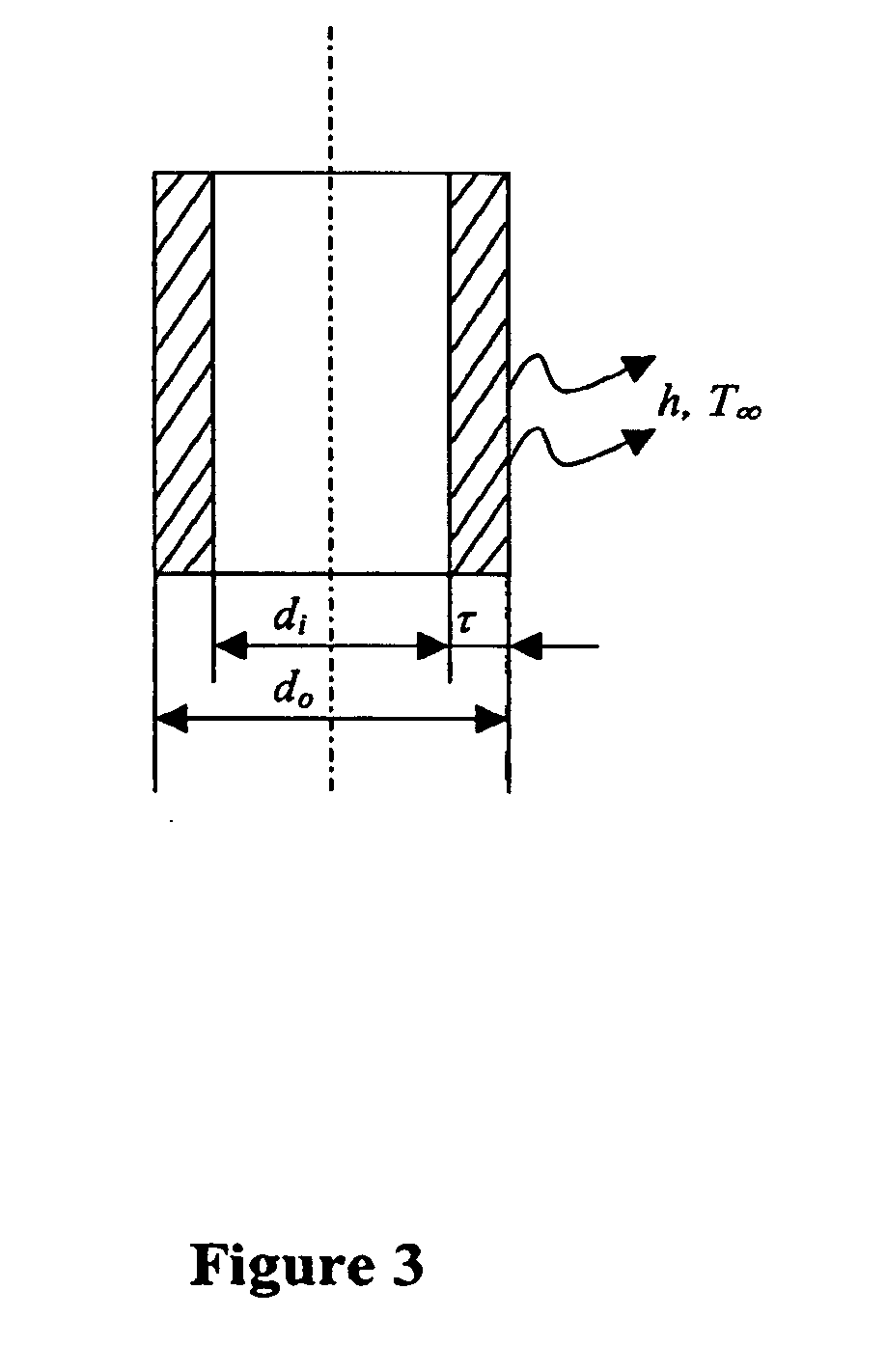Methods for the Cryopreservation of Mammalian Cells
a cryopreservation and mammalian cell technology, applied in the field of cryopreservation of mammalian cells, can solve the problems of slow freezing techniques, affecting the potential use of cells in clinical or research settings, and general association of cryopreservation techniques of mammalian cells, so as to improve cell viability and reduce the level of cpas
- Summary
- Abstract
- Description
- Claims
- Application Information
AI Technical Summary
Benefits of technology
Problems solved by technology
Method used
Image
Examples
example 1
Thermal Performance of Open Pulled Straws and Quartz Micro-Capillaries for Vitrification
[0108]Three major factors that limit the cooling rate in the OPS include: the large thermal mass of the sample as a result of the large inner diameter of the OPS, the limited thermal conductivity of the container walls as a consequence of its material and thickness, and the formation of a vapor layer around it as a result of the nitrogen boiling when in contact with the relatively hot sample (Lidenfrost effect)(Cowley et al., Biodynamica 8:317-329, 1961; Steponkus et al., Nature 345:170-172, 1990). Therefore, as described above, there is still room for improved heat transfer, including reducing the inner diameter (di) of the straws and optimizing the material the straw is made from to reduce the wall thickness (t) and increase the thermal conductivity (FIG. 3).
[0109]In addition to optimizing the sample container, alterations in the cryogenic liquid can also increase the desired cooling rates. The...
example 2
Vitrification of Murine Embryonic Stem Cells
[0136]An effective cryopreservation technique was developed using quartz micro-capillaries (QMC) to achieve ultra-fast vitrification using a low, nontoxic level of cryoprotectants (2 M propylene glycol and 0.5 M extracellular trehalose). This technique was investigated by thermal modeling and solution studies. The efficacy of QMC-assisted vitrification on maintaining embryonic stem (ES) cell viability and pluripotency was also investigated. The results indicate that QMC circumvents the physical limitations which previously hindered vitrification at low CPA concentrations. The results also show that QMC-assisted vitrification is an effective technique for preserving sensitive cell types such as murine ES cells.
Materials and Methods
Murine Embryonic Stem (ES) Cell Culture
[0137]For the purpose of evaluating the maintenance of embryonic stem cell pluripotency, a green fluorescent protein (GFP)-reporter cell system was used. The R1 murine ES cel...
example 3
Vitrification of Hepatocytes
[0155]The vitrification technique was also tested using primary liver cells (hepatocytes) due to their sensitivity to stress, and importance in liver tissue engineering and availability.
[0156]The cell viability of hepatocytes was determined immediately post-cryopreservation in quartz micro-capillaries (QMC) in the presence of either no CPA; 0.3 M sucrose; 1.5 M 1,2-propanediol (PROH); 1.5 M PROH and 0.3 M sucrose; or 2.0 M PROH and 0.3 mM sucrose. The number of viable cells was determined in both vitrified samples as well as non-vitrified controls (i.e., no freezing). Cell viability was quantified by the exclusion of trypan blue. Not surprisingly, cells cryopreserved in the absence of CPA were essentially all dead (FIG. 18). There was only ˜35% survival for cells loaded with 1.5 M PROH prior to cryopreservation. Sucrose (0.3 M) was then added to the cryopreservation solution with 1.5-2 M PROH. Sucrose does not enter into cells as it is impermeable to the ...
PUM
| Property | Measurement | Unit |
|---|---|---|
| temperature | aaaaa | aaaaa |
| thickness | aaaaa | aaaaa |
| thickness | aaaaa | aaaaa |
Abstract
Description
Claims
Application Information
 Login to View More
Login to View More - R&D
- Intellectual Property
- Life Sciences
- Materials
- Tech Scout
- Unparalleled Data Quality
- Higher Quality Content
- 60% Fewer Hallucinations
Browse by: Latest US Patents, China's latest patents, Technical Efficacy Thesaurus, Application Domain, Technology Topic, Popular Technical Reports.
© 2025 PatSnap. All rights reserved.Legal|Privacy policy|Modern Slavery Act Transparency Statement|Sitemap|About US| Contact US: help@patsnap.com



